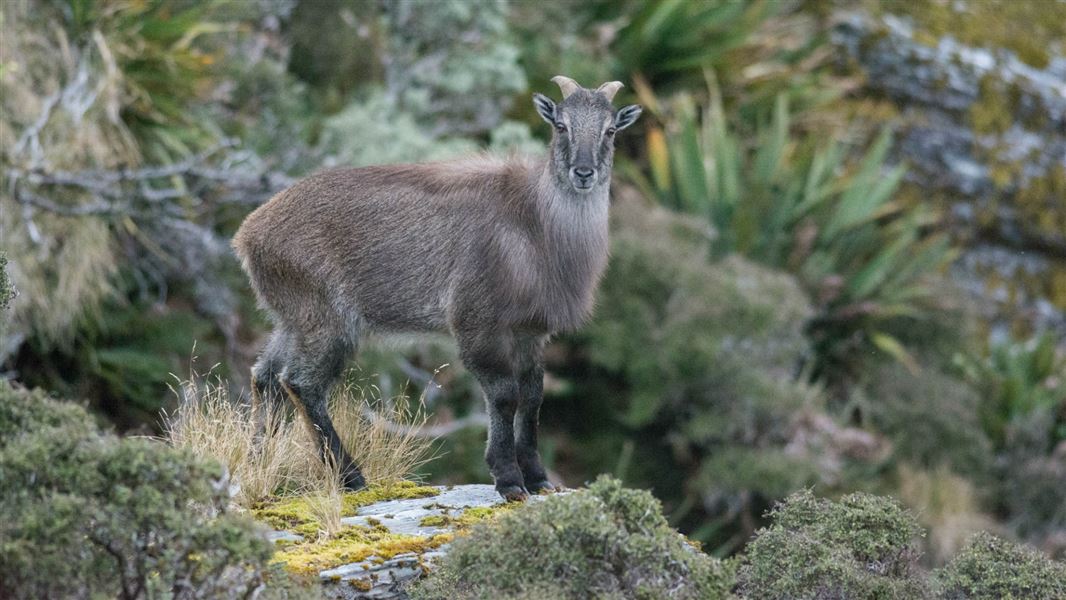Archived content: This media release was accurate on the date of publication.
Date: 26 November 2020
Tahr Programme Lead, James Holborow says DOC hunters and contractors worked over four months in a range of alpine environments and challenging weather conditions.
“Between mid-July and early November, we aerially controlled 7481 tahr on public conservation land to protect alpine eco-systems from the impacts of high tahr densities.”
Maps showing where tahr were controlled as part of the Tahr Control Operational Plan for 2020/21 have been uploaded to the DOC website. Sightings of identifiable males located outside of the national parks management unit have also been mapped to help hunters.
“Hunters can head out on trips this summer on public conservation land throughout the feral range knowing DOC’s control work for the year is complete.”
Next month, DOC will meet with the Tahr Plan Implementation Liaison Group to begin engagement on a Tahr Control Operational Plan for 2021/22.
“We’re approaching the development of next year’s work programme with an open mind and we’re looking forward to reviewing what we have learnt over the past couple of years with members of the group,” says James Holborow.
Himalayan tahr sightings and control maps
Map of tahr feral range (PDF, 1,158K)
Background
- The Himalayan Thar Control Plan 1993 (HTCP) is a statutory document made under section 5(1)(d) of the Wild Animal Control Act 1977.
- DOC’s annual Operational Plan identifies how it will implement the HTCP, which sets a maximum population of 10,000 tahr across 706,000 ha of private land, Crown pastoral leases and public conservation land within the tahr feral range. Between 2016 and Autumn 2019, the tahr population was estimated to be approximately 34,500 tahr on public conservation land alone.
- DOC, commercial hunters, and contractors controlled approximately 11,000 tahr between July to November in 2019. There has since been another breeding season, natural mortality, and an unknown tahr tally from recreational hunting.
- Recreational hunters reported hunting 726 tahr during the April-July tahr ballots earlier this year. The ballot was partially disrupted by COVID-19.
- Last month, LINZ and DOC began surveying 30 Crown pastoral leases as part of efforts to learn more about tahr distribution off public conservation land. The survey results are expected to be released early next year.
Tahr controlled between July and November 2020
A total of 7,481 tahr have been controlled between July and November 2020 under the Tahr Control Operational Plan 2020/21.
Outside Management Unit 4 (national parks)
- 4,182 female and juvenile tahr were controlled on public conservation land located outside the national parks management unit, but inside of the feral range.
- Outside the national parks management unit, DOC targeted high densities of tahr and did not target identifiable males. The groups targeted generally ranged in size between 10 to 30 animals. Other tahr were left for hunters in these areas.
Management Unit 4 (national parks)
- 3,299 tahr were controlled within the Aoraki/Mount Cook and Westland Tai Poutini National Parks Management Unit to protect these special places.
- Management Unit 4 (national parks) is the only location inside the feral range where DOC is legally required to target all tahr.
Contact
For media enquiries contact:
Email: media@doc.govt.nz
